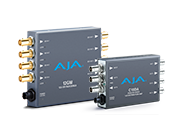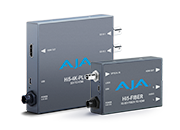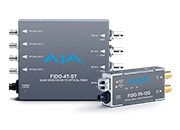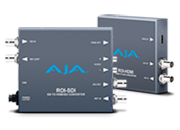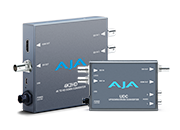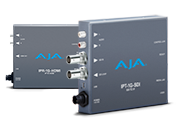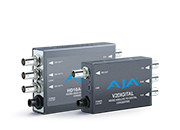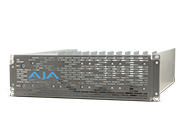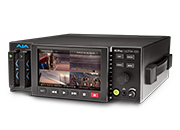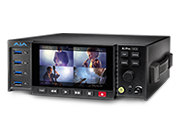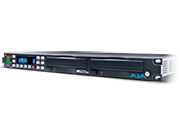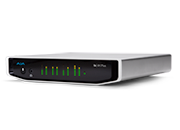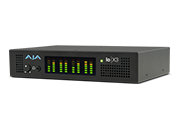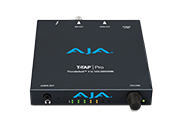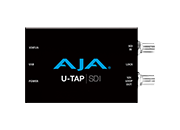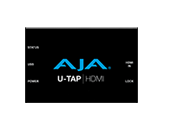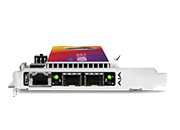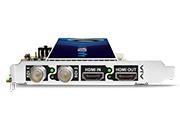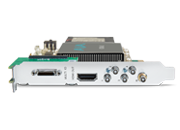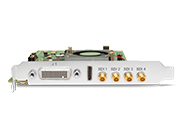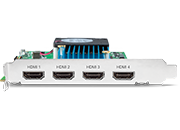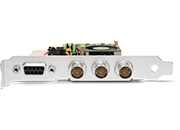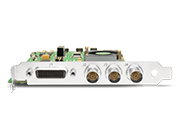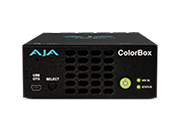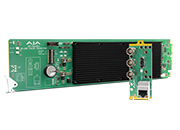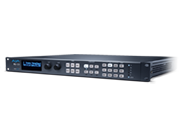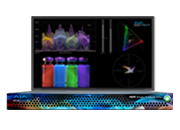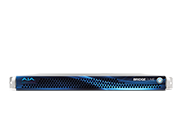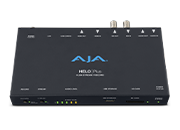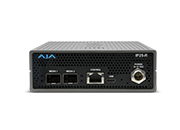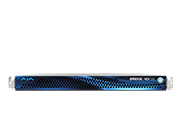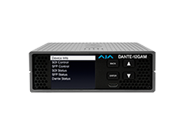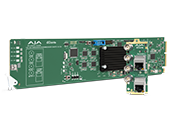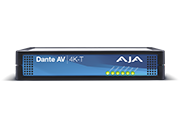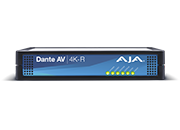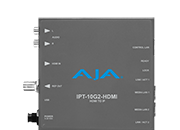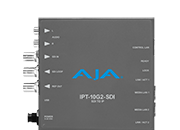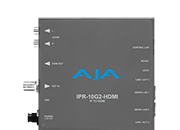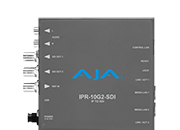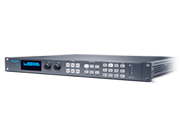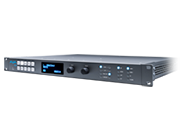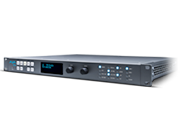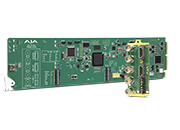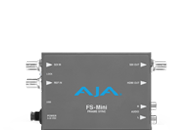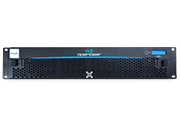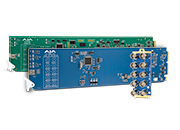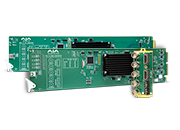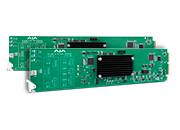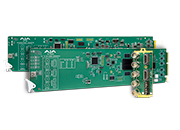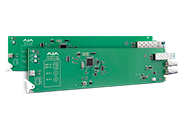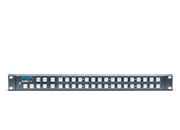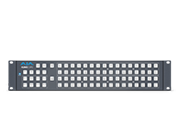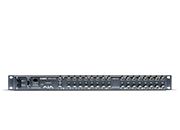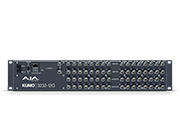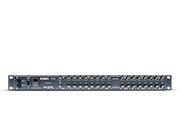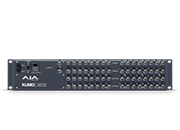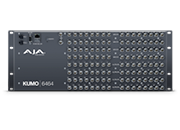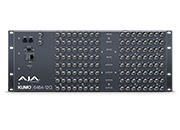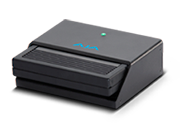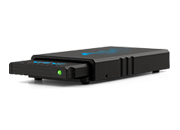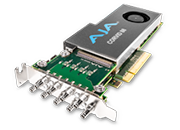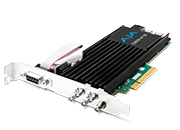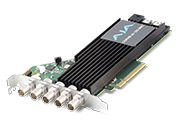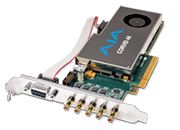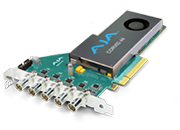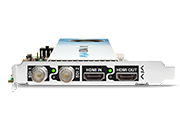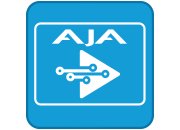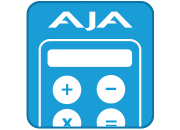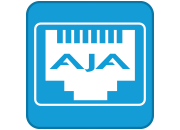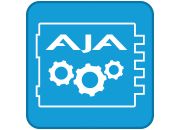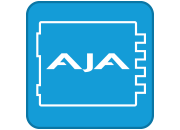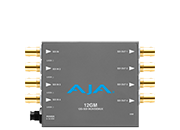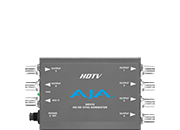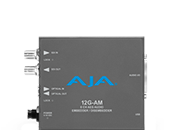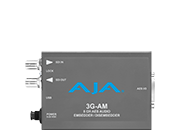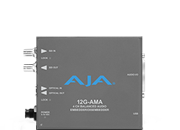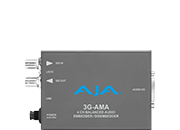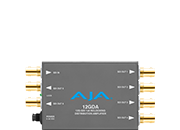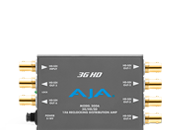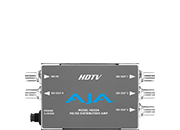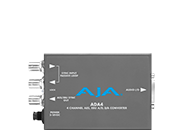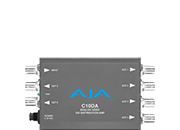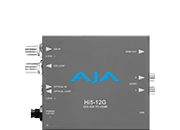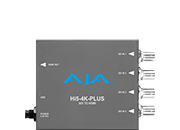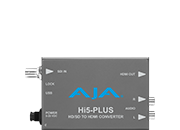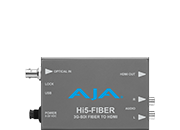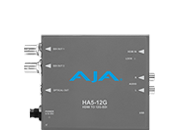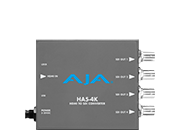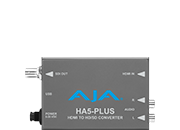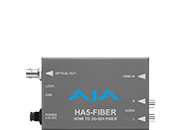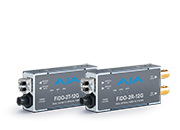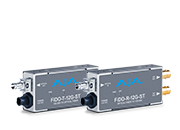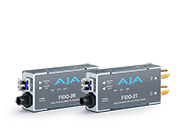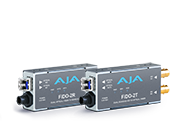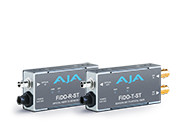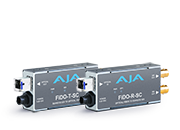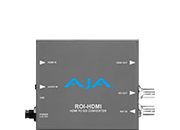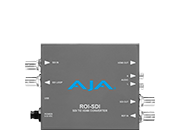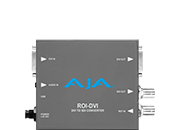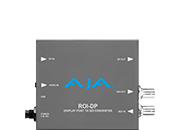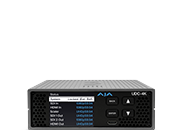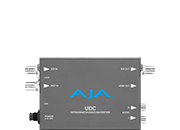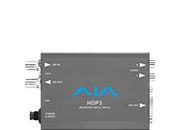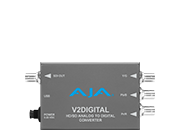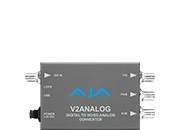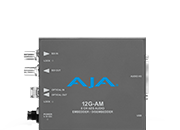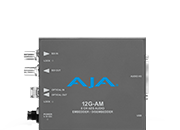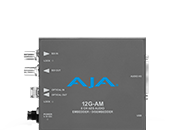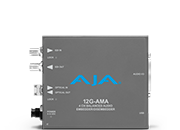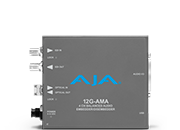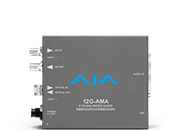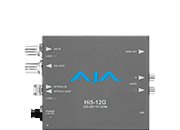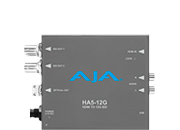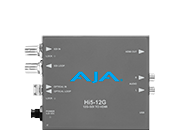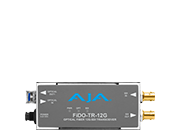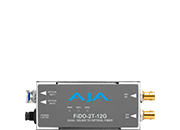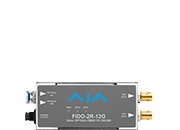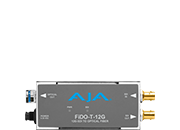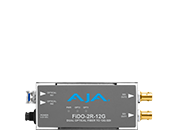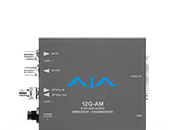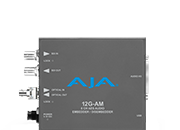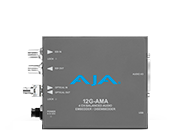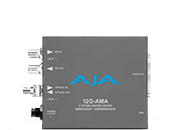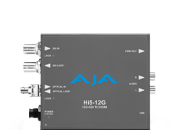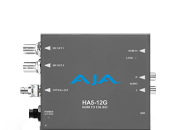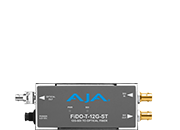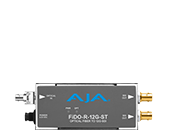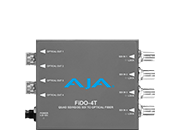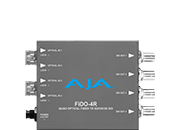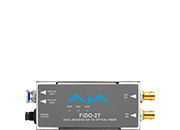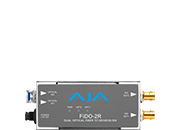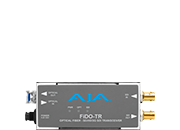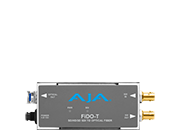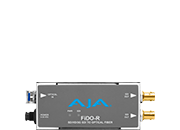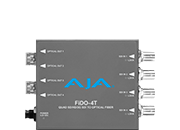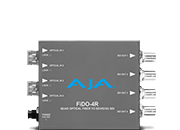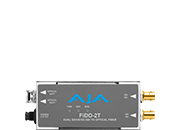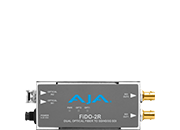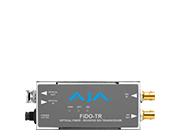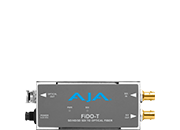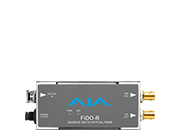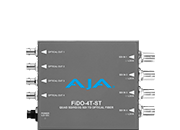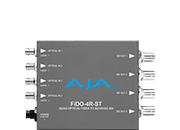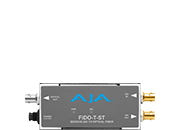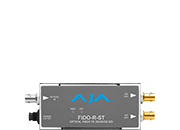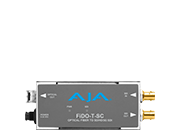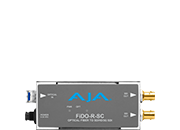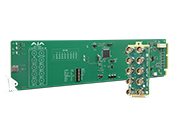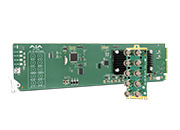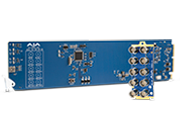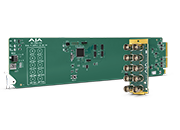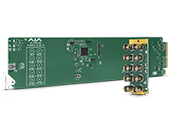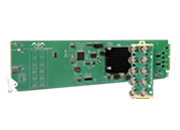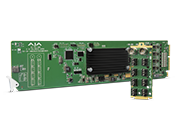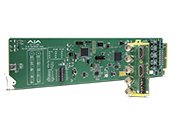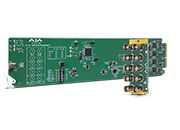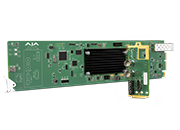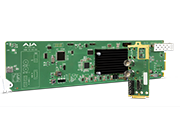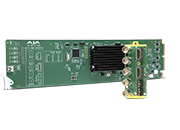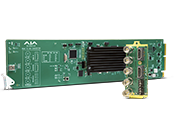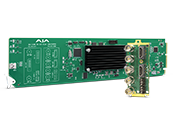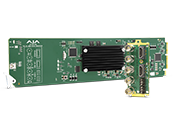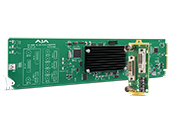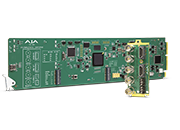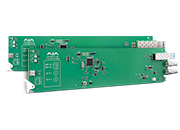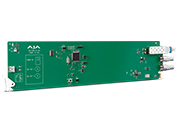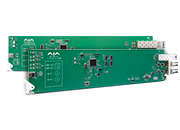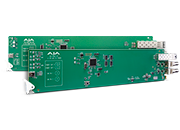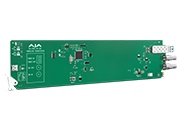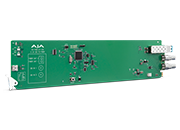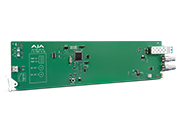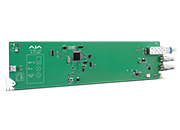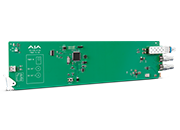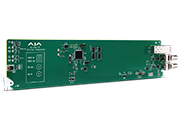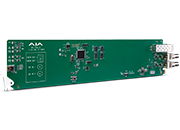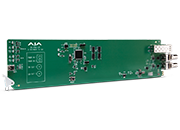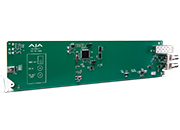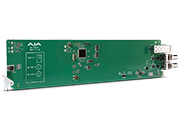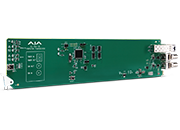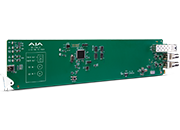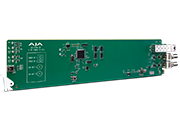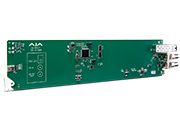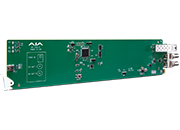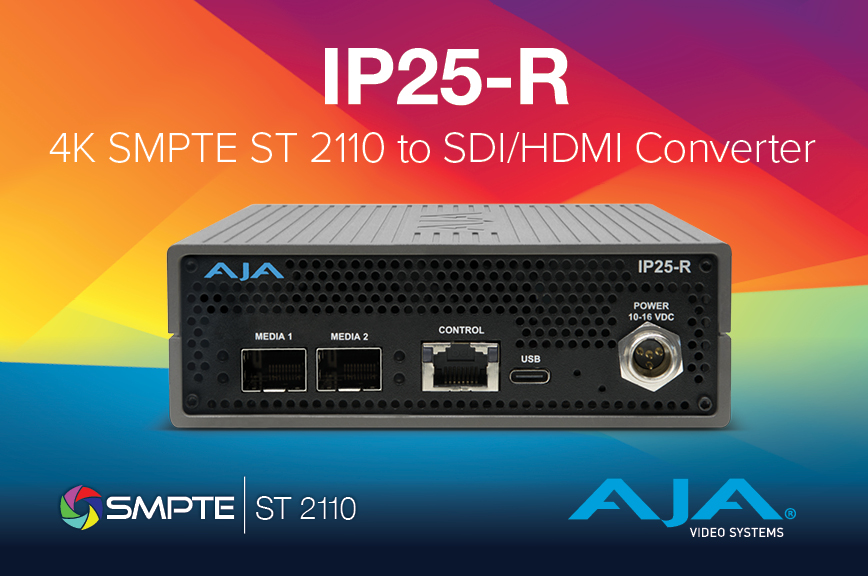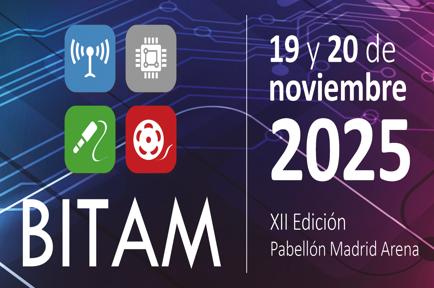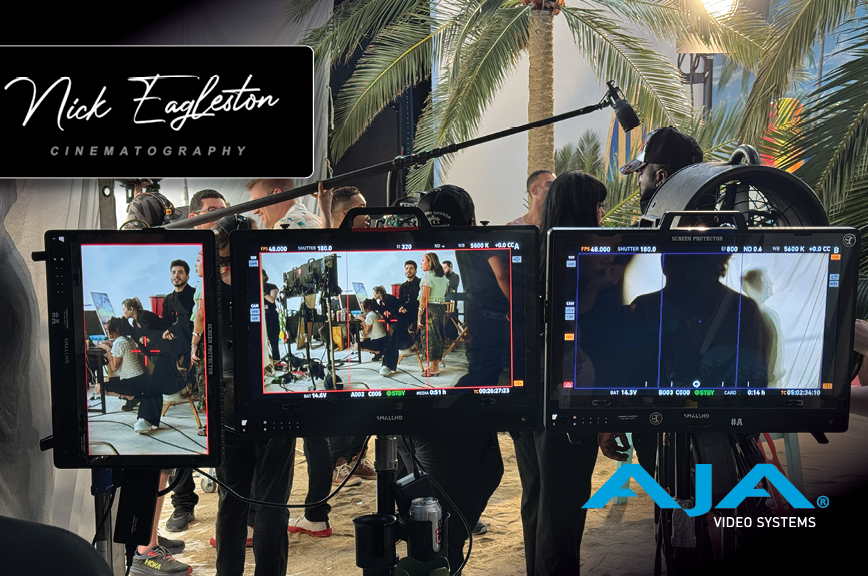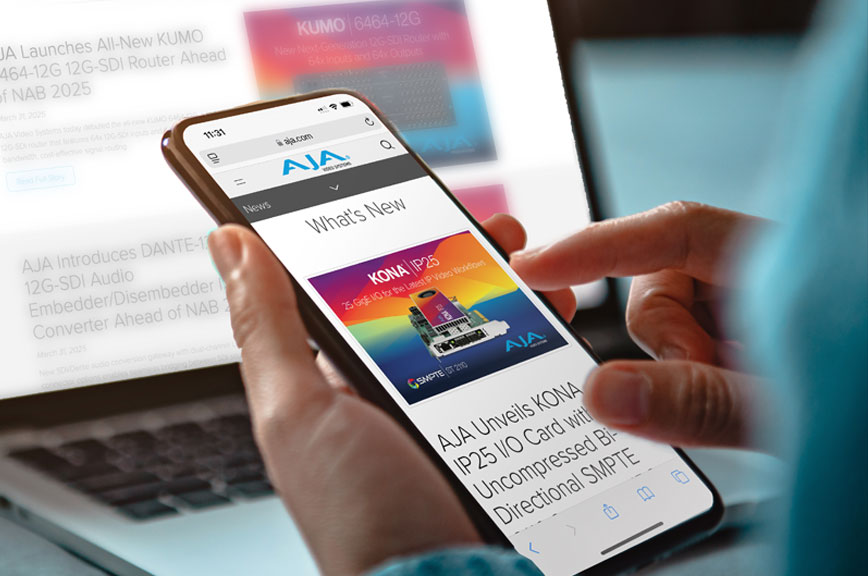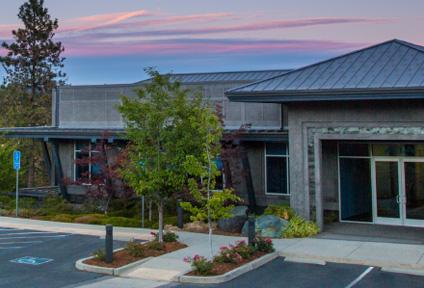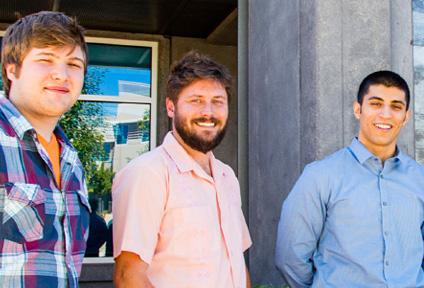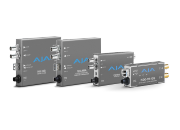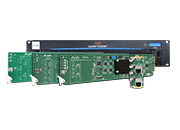Westcoast Pixel on Bringing Live Event Spectacles to Life
October 14, 2025
For the Westcoast Pixel team, orchestrating a dynamic video projection for the Grammys or Media Server programming for Christina Aguilera’s latest concert tour is just another day on the job. The video production solutions provider is a master of engineering video systems that bring live events and immersive experiences to life using 3D projection mapping, LED displays, and media server execution. In a profession that requires an understanding of multiple projector and display types and connections, signal flow is a primary concern, which is why its team leverages AJA Mini-Converters and openGear solutions to bridge signal gaps. Westcoast Pixel CEO Brent Javier and his frequent collaborator, Mike Cianciola, gave us a look behind the scenes at how they help clients make a splash.
![]()
Tell us more about your background.
Brent: I came from the music industry and gravitated toward video production. Then I fell into events, doing audio at local bars and eventually becoming a stagehand for larger productions. One day, I typed “HDMI cable” into Craigslist Gigs and a post popped up for a projection mapping job. I started working with Philippe Bergeron on a 3D projection mapping project for PaintScaping at Pasadena City College, which helped expand my understanding of video and live events and how those two worlds connect.
At PaintScaping, I then worked on several projects, including a projection mapping on a Delta IV Heavy rocket at Cape Canaveral and mapping the Park MGM Casino in Las Vegas for an upcoming Britney Spears residency. After some time, I decided to branch out and start Westcoast Pixel. We’re a company that offers full-service video solutions and builds systems for niche applications in the live events space. I often bring Mike, whom I met through PaintScaping, onto projects. He’s a true “MacGyver”; he can take anything and just hot swap something else in to solve a problem. He is the embodiment of an openGear frame.
Mike: I've been an AV nerd my whole life. Video comes second nature; it's all just signal flow. That's where Brent and I bonded. I initially went to school for theater training, then transitioned to music. I worked for a regional production company that did sound, lights, and staging for about 20 years, then decided to do my own video and install work. Eventually, I crossed paths with PaintScaping, where I did a lot with Brent, and we’re still collaborating today as he grows Westcoast Pixel.
How would you describe 3D projection mapping?
Mike: People often think 3D projection mapping is turning a brick wall into a movie screen, but that’s not what it’s designed for. 3D projection mapping really describes the content. It’s the 3D visual effects utilizing the building and its unique architecture to give it artificial depth. You can take a flat wall and make it look like it's opening into another room with a 3D animation. It can look very real, and it gets even better when we do the effect on a 3D building rather than a flat wall because we can play with light and shadows, leveraging the physical characteristics of the architecture to create immersive effects.
What kinds of projects does Westcoast Pixel take on?
Brent: We do everything from concerts to awards shows and events. The Grammys project last year in New York was one of the first gigs where Westcoast Pixel handled everything end to end. We partnered with BM Creative Laboratory to develop the visuals. Pulling it off was a monumental moment for me.
Mike: We mapped a couple of buildings around Madison Square Garden and projected video onto them in a promotion for the Grammy Awards. The activation took place outside PENN 2, a building in Midtown Manhattan, and featured a live orchestra performing snippets of nominated songs. We projected the visuals onto two sets of windows above the orchestra. It was quite challenging because of all the light in the area. There were 47 LED boards within 10 feet of where we were doing this! Fighting all this brightness was the biggest problem. Thank goodness we had big pure laser projectors, with 15,750-lumen brightness that allowed them to excel in high-ambient light environments.
![]()
What did the workflow look like for the Grammys project?
Brent: We had 10 projectors spread across two different locations. Six of them were on the ground, right in the middle of traffic, and four were stacked two stories high on the roof of a nearby building, which provided bright and clear visuals despite all the ambient light. Media content playback and control were handled by a Disguise VX 4 media server connected to each set of projectors.
Mike: We sent the SDI signal from one of the VX 4s into an AJA FiDO fiber Mini-Converter and then traveled over glass up to the roof. Then, we went to an AJA 12GDA 12G-SDI DA [distribution amplifier] and then to the stacked projectors. The signal to the projectors on the ground was SDI all the way from the media server to the projectors.
Brent: Signal conversion was huge for this project, as it is for many others. Our biggest signal conversion needs generally stem from having to support multiple projectors. When you're dealing with outdoor projection mapping, where you're competing with sunlight or significant ambient light, like in New York, you need to stack as many projectors as you can to get those pixels as bright as possible. That's where an AJA SDI DA comes in handy. It’s an indispensable tool that’s non-negotiable in our systems.
![]()
We hear that you also recently worked on the Christina Aguilera tour. What was that like?
Brent: It was incredible. I was brought on by BRosales Productions to program and operate the Disguise media server to power her visuals. With Christina’s tours, we’re typically provided a giant upstage LED wall upstage, as well as two side IMAG [image magnification] LED walls in different configurations, like a two-sided cube to simulate immersive visuals. For the tour earlier this year, we used another piece of AJA gear I really like, the 3G-AMA 3G-SDI audio embedder/disembedder, with an XLR breakout cable. That one was critical for us because we needed to quickly pass time-coded audio into the media server. Big shout-out to Christina’s creative directors, House of Sam LA, for trusting us to provide the absolute best visual direction for her ever-changing shows.
LED projects are similar to 3D projection mapping ones in that we have pixels that are displaying content; it’s just that the collection of pixels is ultimately a PowerPoint slide, IMAG feed with camera effects, or a custom piece of content. Projection mapping has historically taken that a step further, but LED is challenging conventions. With LEDs getting cheaper and more reliable, there’s been a trend of really pushing the limits of the technology. Companies are thinking outside the box when creating presentations in the corporate world and in music. These days, you can't go to a show without seeing some component of large IMAG screens with visuals and effects.
You mentioned FiDO, 12GDA, and 3GDA. What AJA gear do you use most across projects?
Mike: FiDOs are my go-to because they’re the best way to move video over fiber. I also really like the HDMI and the SDI 12Gs with the fiber ST connector built right into the box. It’s so helpful – no SFPs to deal with and no adapters. I love that. When everything just has ST built into it, life is great.
Brent: I wouldn't trust anything other than a FiDO for conversion. We also rely on AJA DAs to do the distribution reclocks and to get signals where we need them quickly. If we have projectors stacked, it’s easy to configure, and everything in the stack gets the signal. Those Mini-Converters are a key component in almost every project. We also use AJA openGear technology, which is really flexible. Sometimes our client wants us to change the gear configuration or add another camera overhead. We can easily order another AJA openGear card, pop it in, and make critical creative changes without having to compromise.
In our world, as technicians and operators, the best thing is to be able to say “yes” every time, but also recognize there are constraints. Sometimes, that requires finding a solution to meet in the middle. If we do it right, clients can focus on other things with peace of mind, so that the visuals will be handled appropriately.
Why do you opt for AJA gear over other solutions?
Mike: AJA tools make jobs a lot easier. Everybody knows AJA products, and they’re in everybody's warehouse. When you use AJA, it's a statement about your commitment to a project and the quality of results you want to deliver.
Brent: When clients see gear from a brand like AJA, they know the caliber of event they’re going to get. All it takes is one show to realize critical fail points, which is why we have an AJA tool ready to cover any base and reduce the potential for failure.
What trends are you seeing?
Brent: Real-time generative effects over things like IMAG pictures are starting to trend. It used to be that IMAG provided a bird's eye view for audience members who had nosebleed seats all the way in the back. Now it's become an art piece, a driving creative force that helps tell the story of the musician’s set.
I recently worked on a project for a K-pop artist named Jennie, from the group Blackpink. Her show had automation on the LED wall upstage, where she had two monoliths, and then an upstage center. The visuals made it look like doors were opening on the display between songs. We used AJA’s openGear OG-3GDA cards to route clean camera signals into our media server to do Notch effects.
About AJA Mini-Converters
AJA Mini-Converters offer the most complete range of compact, standalone video and audio conversion and infrastructure solutions, designed to the highest standards in reliability and quality. Its converters cover a full range of 4K, HD, and SD capabilities to meet your needs. www.aja.com/family/mini-converters
About AJA openGear Solutions
For critical broadcast and IP applications, AJA openGear compatible converter cards provide the highest levels of quality and reliability for use in openGear frames, including the AJA OG-X-FR. AJA offers cards for video and audio over IP, infrastructure, HDMI/SDI conversion, scan conversion, fiber conversion, and scaling. All AJA openGear cards are Ross DashBoard software compatible, allowing easy configuration and control. An open architecture modular frame system, openGear is supported by a range of equipment manufacturers. The platform offers the freedom to choose from a wide variety of products to meet the needs of broadcast, production, live events, or distribution. www.aja.com/family/opengear
About AJA Video Systems
Since 1993, AJA Video Systems has been a leading manufacturer of cutting-edge technology for the broadcast, cinema, proAV, and post production markets. The company develops a range of powerful, flexible video interface and conversion technologies, digital video recording solutions, and color management, streaming, and remote production tools. All AJA products are designed and manufactured at our facilities in Grass Valley, California, and sold through an extensive sales channel of resellers and systems integrators around the world. For further information, please see our website at www.aja.com.
All trademarks and copyrights are the property of their respective owners.
Media Contact:
Katie Weinberg
Raz Public Relations, LLC
310-450-1482, aja@razpr.com
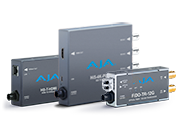 Mini-Converters
Mini-Converters
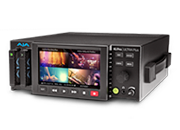 Digital Recorders
Digital Recorders
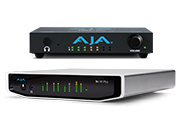 Mobile I/O
Mobile I/O
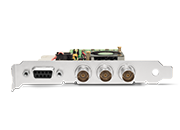 Desktop I/O
Desktop I/O
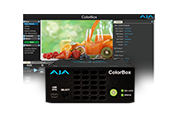 Color
Color
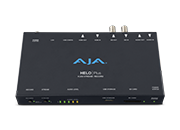 Streaming
Streaming
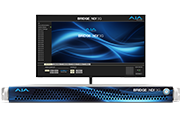 IP Video/Audio
IP Video/Audio
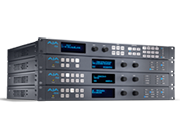 Frame Sync
Frame Sync
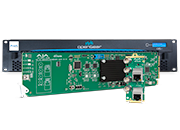 openGear
openGear
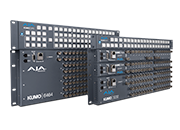 Routers
Routers
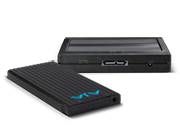 Recording Media
Recording Media
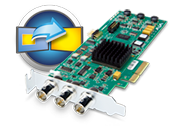 Developer
Developer
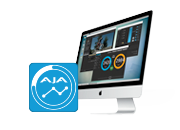 Software
Software
